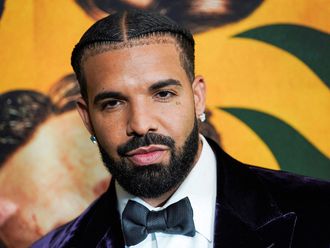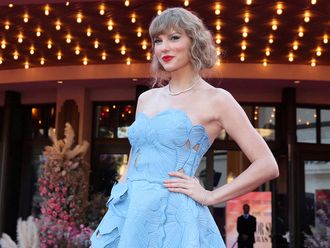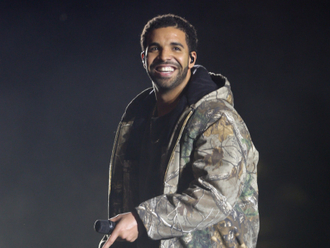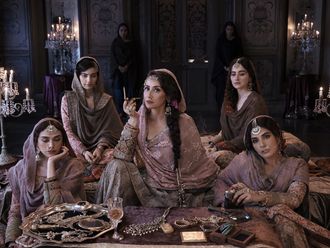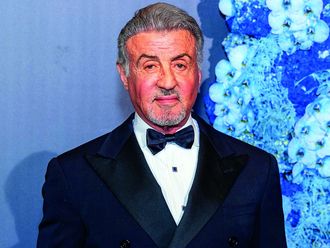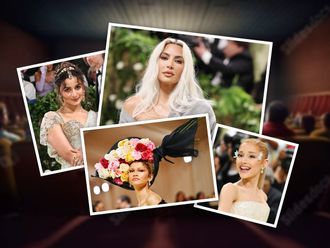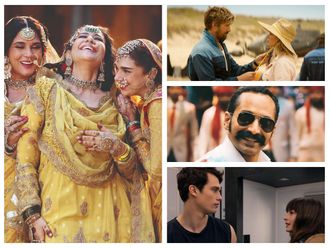Rihanna’s biggest fans, the Rihanna Navy, must be having an absolute ball this week. Somewhere between throwing a stack of money at BET’s president of programming during Sunday’s BET Awards (as part of an act), and releasing a blood-soaked video for single [Expletive] Better Have My Money (BBHMM) on Thursday, their Bajan pop idol has quietly smashed a huge sales record, becoming the first solo artist to surpass more than 100 million gold and platinum single certifications.
Rih-rih’s now the holder of the most digital single awards, according to the Recording Industry Association of America (RIAA), which basically means that she’s sold more millions of singles than any other artist since the awards were created in 1958. She’s winking, smiling and waving directly into the nightmares of all her haters and cannot be bettered, as far as commercial success is concerned. “But how did she, a pop starlet puppet who doesn’t even play ‘real instruments’ or write her own songs, do this?” you may ask.
After all, guitar-slinging, all-about-my-life singer-songwriter Taylor Swift stands about 12 million certifications behind Rihanna, and I thought we’d all agreed Swift was the most powerful woman in pop last week after she scolded Apple into paying artists during Apple Music’s free trial period.
Take a look back at Rihanna’s 10-year career, though, and there are all the signs that we should have seen this coming.
1. Playing the island-girl card at the right time
Rihanna’s fresh-faced demands that a DJ turn up the volume on her favourite song landed right in the middle of dancehall’s Sean Paul-led foray into the mainstream. Her debut single Pon de Replay combined the slightly cliched island riddims of Beyonce’s Baby Boy with Jennifer Lopez and Madonna’s recent DJ-request anthems — Play and Music, respectively — and sold two million copies, peaking at No 2 on the Billboard singles chart. But whatever, we might have thought, she could easily be another MTV-heralded one-hit wonder.
2. Using 1980s hits on new tracks
She wasn’t. Instead, Rihanna started to show her staying power, cleverly folding past pop references and samples into her songs. Let’s be clear: Rihanna didn’t write SOS, with its Tainted Love sample, New Order-borrowing Shut Up and Drive, nor Don’t Stop the Music, which features a snippet from Michael Jackson’s Wanna Be Startin’ Somethin’. She did widen her audience demographic by including the 80s nods in her songs, though, providing a touch of nostalgia for casual pre-millennial listeners and pop glee for those blissfully unaware of the songs’ origins.
3. Making us all shout “Umbrella-ella-ella”
How could we forget one of the most irritating, yet beautifully catchy, vocal hooks of 2007? No, seriously: please speak up if you know an easy way to shake off this hook once it’s stuck in your head. Umbrella will always mark the moment that saw Rihanna shoot to full-on fame from under the wing of mentor and former Def Jam label boss Jay Z. It probably didn’t hurt that the single’s release was perfectly timed for awful weather in the UK (floods, where it spent nine weeks at No 1), New Zealand (storms) and Romania (more storms), later dubbed the Rihanna curse.
4. Pulling off the sappy stuff
OK, fine. She had a couple of dance-friendly bangers under her belt a few years in, but there wasn’t much evidence to suggest Rihanna could extend her appeal into slow-jam territory. As an initially reluctant Rihanna supporter, I realised I had to concede defeat once 2006’s fairly bland Unfaithful, 2008’s Take A Bow and 2011’s stripped-down Stay had all gone platinum, multiple times. Even when Rihanna opts for doe-eyed vulnerability over winking butt-shaking or sneering attitude, the fans will be there.
5. The videos: Disturbia, Rockstar 101 and Pour it Up
Rihanna may have cropped up just as MTV was truly giving up on being a destination for music, but she harnessed the power of music videos anyway. She expertly navigated a transition from glossy-lipped teen in pedal pushers to chained-up spider lover, Slash impersonator and smoke-machined stripper in about eight years. Unlike Britney Spears, Christina Aguilera and Michael Jackson before her, the shift from sweet kid in the public eye to adult didn’t cost her commercial success or lead to a major meltdown. A few fans may have preferred the pre-Good Girl Gone Bad version of Rihanna, but she widened her audience from the usual teen girl demographic to a far wider demographic enchanted by her undeniable sex appeal.
6. Taking singing lessons
It took a song filled with penis innuendos for me to realise that, suddenly, Rihanna had learned to sing. At first, her voice’s nasal quality sounded like an affectation designed to hide a limited vocal range, but its creaking textures went on to turn into a powerful and emotive device. Rude Boy saw her skilfully flitting between her quivering head voice and meaty chest voice, before Stay displayed her potential for control and Only Girl in the World and Diamonds highlighted her ability to belt. Dammit, Rihanna.
7. Bonding with fans on social media
Rihanna understands how the intimacy of social media enables pop stars to connect with fans more closely than before. Where others leave tweets to their press teams or only share impersonal promotional material, Rihanna has built a brand on giving her followers — that aforementioned Rihanna Navy — early access to personal photos, upcoming magazine editorials and, obviously, song teasers. I mean, she used to upload holiday pics onto Facebook, back when the rest of us were doing that for our own friends. Social media curation is a not a game to her, and it whips up the sort of ride-or-die loyalty that helps drive her chart success.
8. Her sexualised, idgaf fashion sense
Rihanna’s openness online runs in tandem with her relevance as a style icon. After a few early sartorial wobbles, she rose to prominence as a figure in fashion with the sorts of outfits that People magazine would label “risky!” or “super-sexy” — Boy London, Adam Selman, Alexander Wang, Mink Pink and Jeremy Scott were just some of the brands to feature in her high-street, boutique and designer label combinations. Her daring fashion sense further feeds into her brand (see above), making fans eager not only to stan for her music but to rave about whatever outfit she was seen wearing in the club.
9. We Found Love’s unprecedented success
We may have Rihanna to thank for Calvin Harris’s headache-inducing EDM beats and their stubborn refusal to leave the charts. She helped elevate Harris from his disco-indebted Colours days to the cookie-cutter, fist-pumping fare of We Found Love (and later Sweet Nothing with Florence Welch, Let’s Go with Ne-Yo and Open Wide with Big Sean), and their single together was their biggest commercial success to date. This song has been certified nine-times platinum in the US, even though its chorus literally consists of one line repeated four times over a four-to-the-floor beat. Importantly, the video’s depiction of a couple’s toxic relationship mythologised Rihanna’s tumultuous (and violent) relationship with R&B singer Chris Brown, and brought fans closer towards the line that she blurs between real life and art.
10. FourFiveSeconds and the anticipation for R8
Finally, we come up to date with the build-up to Rihanna’s as-yet-unnamed forthcoming album, nicknamed R8. She practically released one album per year between 2005 and 2012 — demonstrative of a relentless work ethic — so fans are hungry for new music. She’s making the most of that, swerving between BBHMM’s trap-inspired bravado and FourFiveSeconds’ tenderness. Interestingly, none of the singles besides FourFive have hit the Billboard Hot 100’s top 10, but history suggests that her fans will still turn out in droves to buy this album once it’s out.



